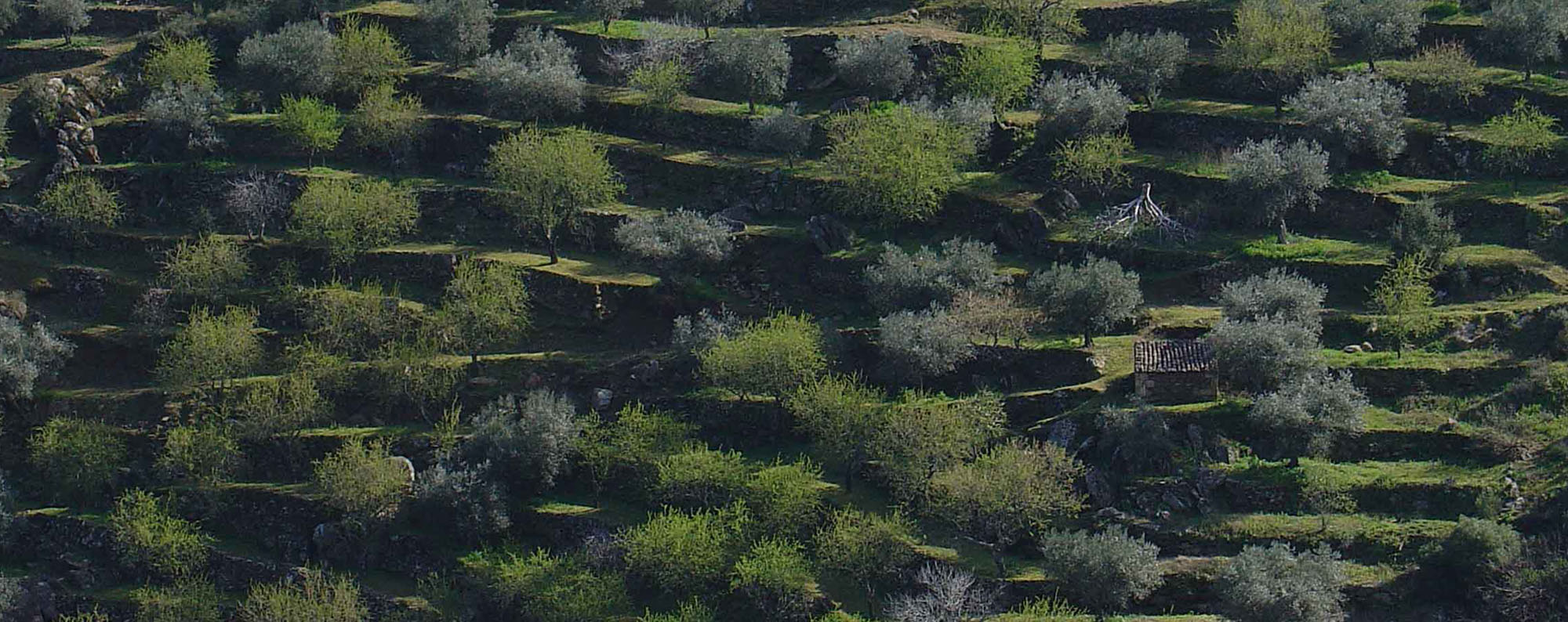
REGENERATIVE AND SUSTAINABLE FARMING
Farming practices at Quinta Vila Rachel
There are two ways to approach agriculture in this world: one that is merely exploitative and the other that is both exploitative and regenerative. At Quinta Vila Rachel, all agricultural practices are primarily aimed at soil regeneration, meaning that what we extract from the soil is returned with interest in a completely natural and sustainable manner.
For us, the practice of fertilization is crucial to achieving healthy and nutritious harvests. Therefore, we do not use any artificial fertilizers to nourish our crops. Instead, we employ a technique that we consider the foundation of all our agriculture: soil covering or "mulching." (1) (2) Well-executed mulching can provide all the nutrients that a crop needs to be productive and nutritionally rich.
In this way, we cover the soil around all our trees and plants with various types of biomass found on our property, from dry leaves to tree pruning remnants. This process can be done in three different ways:
1. By shredding: We collect all the high-volume vegetative material around the estate, shred it in a wood chipper, and then distribute it as soil cover.
2. By composting: We often let small piles of biomass compost from one year to the next. When we notice that the biomass has broken down into powder, we distribute it over our crop soil.
3. By direct pruning: We often perform direct pruning of tree branches using a machete, applying these prunings at the base of the tree or plant we want to fertilize. This process is done in a way that places the biomass as close to the ground as possible to start the composting process.
We use pruning material from Olive trees, Arbutus trees, Grapevines, Cork Oaks, Holm Oaks, Pine trees, among many others.
We also have three special areas on the estate where we control weeds using this pruning method. In these areas, three trees considered invasive species in Portugal—Acacia-mimosa, Arundo Donax (commonly known as Cana), and Ailanthus—grow rapidly. Without control, they could completely invade the territory of other crops. So, instead of attempting to completely eradicate these three trees, something we tried in the past and failed, we strategically join forces with them. This means we let the trees grow as much as possible without disturbing our main crops. When they reach the right size, we cut them with the intention of using that biomass to fertilize the crops. Specifically, Acacia-mimosa is a nitrogen fixer in the soil, making it an extremely valuable tree for other crops. We take advantage of its rapid growth to provide us with biomass in significant quantities.
The soil covering we implement is essentially a copy of what already occurs in forests entirely naturally, and it is crucial, particularly for the following factors:
1. **Protects the tree/plant roots from excess direct sunlight.**
2. **Preserves moisture in the soil near the roots.**
3. **Prevents the growth of competing weeds for nutrients around the tree/plant.**
4. **Creates an entire food chain that will benefit the tree/plant with nutrients, attracting bacteria, fungi, nematodes, protozoa, worms, among many other life forms.**
5. **Its composting helps improve the soil where the crop is installed through humus production.**
6. **Helps prevent soil erosion, as rain will no longer directly hit bare soil, preventing rapid disintegration.**
Worms, specifically, are essential living beings for us to have nutrient-rich soil. Through their excrement, the tree/plant will be fed with three essential nutrients: nitrogen (3), phosphorus (4), and potassium (5). At the same time, worms, with their activity, create small tunnels in the soil, preventing soil compaction and providing better movement of water and nutrients to the plant/tree roots. (6)
by
Tiago Cartageno
Owner of Quinta Vila Rachel
(1) https://research.libraries.wsu.edu:8443/xmlui/bitstream/handle/2376/5262/FS160E.pdf?sequence=2
(2) https://www.sciencedirect.com/topics/agricultural-and-biological-sciences/mulches
(3) https://www.nature.com/articles/srep06365
(5) https://link.springer.com/article/10.1007/BF00395467
(6) https://www.nrcs.usda.gov/wps/portal/nrcs/detail/ks/newsroom/features/?cid=stelprdb1242736
